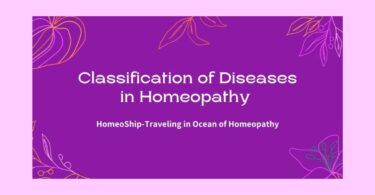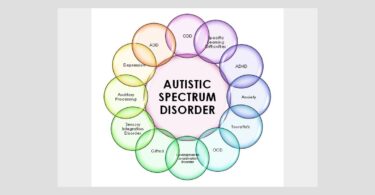It is very interesting that homeopathy can be prescribed with animals. Hahnemann had suggested that this be explored early on. In a paper presented while he lived in Leipzig, sometime between 1811 and 1821, when he lectured on homeopathy at the University of Leipzig, he puts forth the idea of treating animals with homeopathy. It is entitled The Homœopathic Science of Healing Domestic Animals.
This was pursued by C. M. F. von Böenninghausen. He published many animal cases showing the success of the method with them. He explains that he is doing this to give evidence of the correctness of the homeopathic method. Though he does not use the word, he is saying it demonstrates that it could not be placebo.
Though the treatment of animals had this start during the inception of homeopathy, it did not develop so fully as the human side of treatment. There are obvious limitations. We cannot have the detail of symptoms such as type of pain, where it is specifically located, the emotional state, sensations, etc.
Many of our historical teachers, such as Kent, give us methods that need a human patient to be accomplished. However, even in treating human beings, there are situations very much like treating an animal — a person in a coma, a young child that cannot talk, someone so ill that they cannot communicate. Nonetheless, they can be treated successfully.
The veterinary approach, therefore, will emphasize aspects of the case that can be observed.
- The anatomical location
- The type of lesion (ulcerative, inflammatory, eruptive, etc.)
- Behavioral changes, in general terms
- Modalities which can be observed such as seeking heat, or open air.
- Concomitants, symptoms appearing together. This emphasis of concomitants has made the Böenninghausen approach so very useful.
Another consideration with animal work is how accurately can the provings of remedies in human beings be applied to animals? Hahnemann in his presentation says that the method of homeopathy for animal treatment is the same as that for human beings — based on careful observation.
“No one will dispute my contention that veterinary medicine in general must be considered in a similar manner as medicine for humans, and that the same ideals govern the former as the latter. They are first: the exact observation of any given case of illness in the suffering animal and second: the careful investigation into the pure effects of known medicaments on the various kinds of healthy domestic animals…”
Here he also is saying that careful provings are to be done in animals. However, that has not been done unfortunately. Nonetheless, those that have been prescribing homeopathic treatment in animals for the last 30 or 40 years have learned that, for the most part, the provings done in human beings are reliable to use with animals. This is a relief.
Development of a Training Program
To encourage, and develop, the veterinary application of homeopathy to animals, a training program was started in 1992. It was a year-long program with 4-day, in-person, meetings occurring five times. As well there were homework assignments and mentoring between the meetings. Our first course, in Eugene, Oregon, graduated 26 veterinarians. Since that time, we have had 19 courses resulting in over 500 veterinarians being trained in this method. What is taught is the method of Hahnemann. It is founded on the Organon of Medicine and the Chronic Diseases, and the principles that Hahnemann established. Here is a picture of how we organized the content in the workbook binder given to students. It is quite a bit of material, several hundred pages.

To give you more of an idea of the content, here is a sample of some of the content of what is in the Theory & Principles and Making a Prescription sections.
Theory & Principles
- Hahnemann’s Discoveries
- The Concept of the Life Force
- The Nature of Disease
- Scientific Materialism vs. Vitalist Models (Graphics)
- Disease: A Mistuning of the Life Force
- Homeopathy is the Science of Curing Disease with Medicines
- Using a Medicinal Disease to Cure a Natural One
- Guiding Principles
- How Homeopathy Cures
- Cure, Palliation and Suppression Compared
- Homeopathic Classification of Disease (Acute vs. Chronic)
- Hahnemann’s Discovery of Chronic Disease
- The Visible Manifestations of Chronic Disease Over Time
- Psora As It Appears In Latent Form
- Psora (Wasting Syndrome) in Cats and Dogs
- The Wasting Syndrome (Psora)
- The Three Forms of Chronic Disease (Miasms)
- A New Look At The Vaccine Question
- The Vaccination Question (James Tyler Kent, MD)
- Vaccination: A Sacrament of Modern Medicine (Richard Moskowitz, MD)
- Rabies In Cats, Dogs and Other Pets
- Hydrophobia, Lyssa and Rabies (CG Raue, MD)
- Homeopathic Alternatives To Vaccines
- Susceptibility And Protection (James Tyler Kent, MD)
- Susceptibility, Reaction, Immunity, & Protection
- The Significance of “Local Disease” (from Hahnemann’s Organon of Medicine)
- Understanding Mental & Emotional Diseases
- Ethical Practice
Making a Prescription Section
- Making a Prescription: Basics/Potency Scales
- Common Homeopathic Terminology
- Repertory Study: A Useful Exercise
- Part 1 of Taking the Case: The Key to Acquiring the Right History
- Part 2 of Taking the Case: Asking the Right Questions
- The Progress Report
- Some Basic Questions on Prescribing
- Prescribing With Keynotes
- Prescribing With Concomitants
- Sequential Prescribing (Flow Chart)
- Understanding Remedy Action and Patient Counter-Action
- When the Remedy is Close But Not the Similimum/Timing of Administration
- Homeopathic Aggravations (James Kent, MD)
- Case Management
- Client & Practitioner Obstacles to Cure
- Possible Outcomes of Various Therapies
- Treatment of Injuries and Wounds, (Including Flow Chart and Repertory)
- Repertory for Injuries and Wounds, William H. Schwartz, MD
- Repertory of Leg Injuries
- Two Examples of How to Work Up a Case: Cervical Disk
- Common Clinical Conditions
- Hahnemann’s Instructions on the Treatment of Chronic Disease (T.Bradford, MD)
- Remedies for Treatment of Chronic Disease (Anti-Miasmatic)
- Relationship Between Chronic Remedies & Their Corresponding Acutes
- Treatment Methods For Chronic Disease Cases
- Hyperplasia Syndrome (Sycosis)
- Degenerative Syndrome (Syphilis)
- Further Analysis of Chronic Disease Treatment: Polychrests
- Prescribing For Chronic Disease (Flow Chart)
- Remedies Useful for Rabies Miasm and Vaccinosis
- Important Rubrics for Post-Vaccine Skin Disease
- A Mini-Repertory For Ears
- Cat Behavior for the Veterinary Homeopath
- Advice On Potencies (James Kent, MD)
- Potency Scales / Progressions / Repetitions
- Which Potency? (Flow Chart)
- Potency Effect In Relationship To The Intensity Of The Disease
- Understanding LM Potencies
- Treatment of Cancer and Tumors
- Cancer: The Challenge and the Solution
- Homeopathic Perspective in the Treatment of Cancer
- Treatment of Cancer Guidelines
- A Repertory for Treatment of Cancer and Tumors
- Glossary of Terms Used in the Cancer/Tumor Repertory
- Remedies for Treatment of Cancer, Tumors
Organizational Method
There is emphasis on understanding the principles, for as we have learned, if the principles of homeopathy are not fully understood, the mastering of the homeopathic method will not proceed. In addition to this, the course and workbook further covers: materia medica study; prescription evaluation; treating clinical conditions with emphasis on the very frequent problem of vaccinosis; extensive step-by-step examples of cured animal cases to elucidate theory, principles, and the art of case taking; business forms; and large resource section.
Our program has been highly acclaimed by our students for high-quality standards in teaching, organization and thoroughness of the workbook materials, providing an immersive learning experience and dedicated mentorship by our supportive faculty team.
What the Students Say
‘This was a superb course… I feel like I’ve advanced years beyond my former prescribing ability and understanding of homeopathy.” — Jan Facinclli, DVM
“I found the course very worthwhile, having just taken a human homeopathy course, which I felt I got little out of. In comparison to the human course, I feel very much more comfortable to take cases, and have, with a great deal more success.” — John Haromy, DVM
“I studied and ‘practiced’ on my own for hundreds of hours before taking the course. I learned more and became more effective in my prescribing after one session than ever before. It is invaluable and learning from Dr. Pitcairn’s experience is even more invaluable. I listen to the tapes of the course over and over, and always take away something new’.” — Jeff Feinman. VMD
“Dr. Pitcairn’s course opened up a whole new world to me. I now look at all my cases in a new light, regarding the animal as a whole… I recommend this course for veterinarians at any point in their career. It will broaden your horizons and refresh the mind.” — D’ara Klein, DVM
“It was spiritually uplifting for me and transformational — I am forever changed by it…the most important course of my professional life.”
— Henry Kostccki, DVM
“I came to this course not knowing what to expect from either the course or homeopathy, only knowing I felt a deep lack of fulfillment in medical practice. I felt like a technician, not a healer. I am absolutely overwhelmed at the possibilities homeopathy has opened up for me in terms of fulfillment as a healer and of healing as an art. Also, Richard is a rare and gifted teacher and I deeply appreciate his sharing his life’s work with us and his leadership and inspiration.”
— Rebecca Coleman, DVM
“This was truly an inspirational course. Sure, it was about homeopathy, but there was so much more. I really appreciated your presentation skills and sense of humor as well as your ability to make complicated material understandable.”
— Peter L. Rodgers, DVM
‘This was a totally excellent class. I had reservations about whether I could ’buy’ the homeopathic principles and whether at my ‘advanced’ age I could study and learn something so new and alien to my previous outlook. Yet, in class, you presented the material so well that I could easily follow the logic and was tremendously inspired to study, learn and put it into action. Very well done!”
— Bettye I Loolcy, DVM
Development of the Program
In 2013, the program was turned over to Dr. Sarah Stieg, director of the newly-formed Pitcairn Institute of Veterinary Homeopathy, who has continued the same program format. Due to the recent limitations in travel preventing both instructors and students to appear in person, we shifted to online training, which will begin in June 2023.
In moving to an online medium, our goal is to increase the accessibility of our program to students around the world. We very much want this to continue, even being so ambitious as to think it will transform veterinary medicine.
Over the last 30 years of teaching, we have continued to evolve and expand our program every year. With great excitement, we now bring you the next generation of our program – providing the most comprehensive foundation course which will facilitate the mastery of classical homeopathy. With integration of key material from our Advanced Programs and new material from our faculty team, we have created the complete “Professional Master Course in Veterinary Homeopathy.”
The Professional Master Course will offer 180 hours of live faculty instruction in a virtual multimedia classroom format over the course of 15 months and provide even greater faculty contact and mentoring for students than ever before. Our dedicated faculty team brings decades of experience with classical homeopathy as their primary modality in both small and large animal medicine. All sessions will be held live (and will be recorded) to promote an immersive experience and interactive classroom learning.
The program comprises of live online learning modules, utilizing interactive classroom style with lecture, discussion, and problem-based learning case studies. In between learning modules, there are intermodular webinars, case rounds, and homework study, including reading and clinical case work. Additional faculty guidance is provided through forum and mentorship support throughout the entire program to facilitate students mastering their own clinical case work.
Our course structure and length are designed for working practitioners allowing both an immersive study experience and a work-life-study balance. Achieving this balance is critical to reach mastery and obtain the deeper understanding of classical homeopathy needed to tackle the complex multilayered chronic cases that we so commonly see in practice.
Clinical case work with dedicated mentoring is vital to success. Similar to our fourth year in veterinary school, mentored case work brings our studies to life and truly facilitates students moving through the learning stages.
Upon completion of the Professional Master Course, you will have acquired all the tools needed to begin your journey as a skillful classical homeopathic practitioner. Hence titled, as our program truly facilitates the mastery of this work – ensuring that classical homeopathy is an exciting, effective, and deeply satisfying method to heal your patients.
For further information go to www.pivh.org. Questions can be sent to [email protected].







This ia a one of a kind opportunity for professionals to learn veterinary homeopathy from one of the masters of this topic, Homeopath and author Dr. Richard PItcairn.
Very highly recommend taking this training. Dr. Richard Pitcairn is very knowledgeable and what he explains is thorough and very reachable. As homeopaths, we must have confidence that homeopathy is very practical and effective in its use on animals. Dr. Pitcairn provides excellent training.